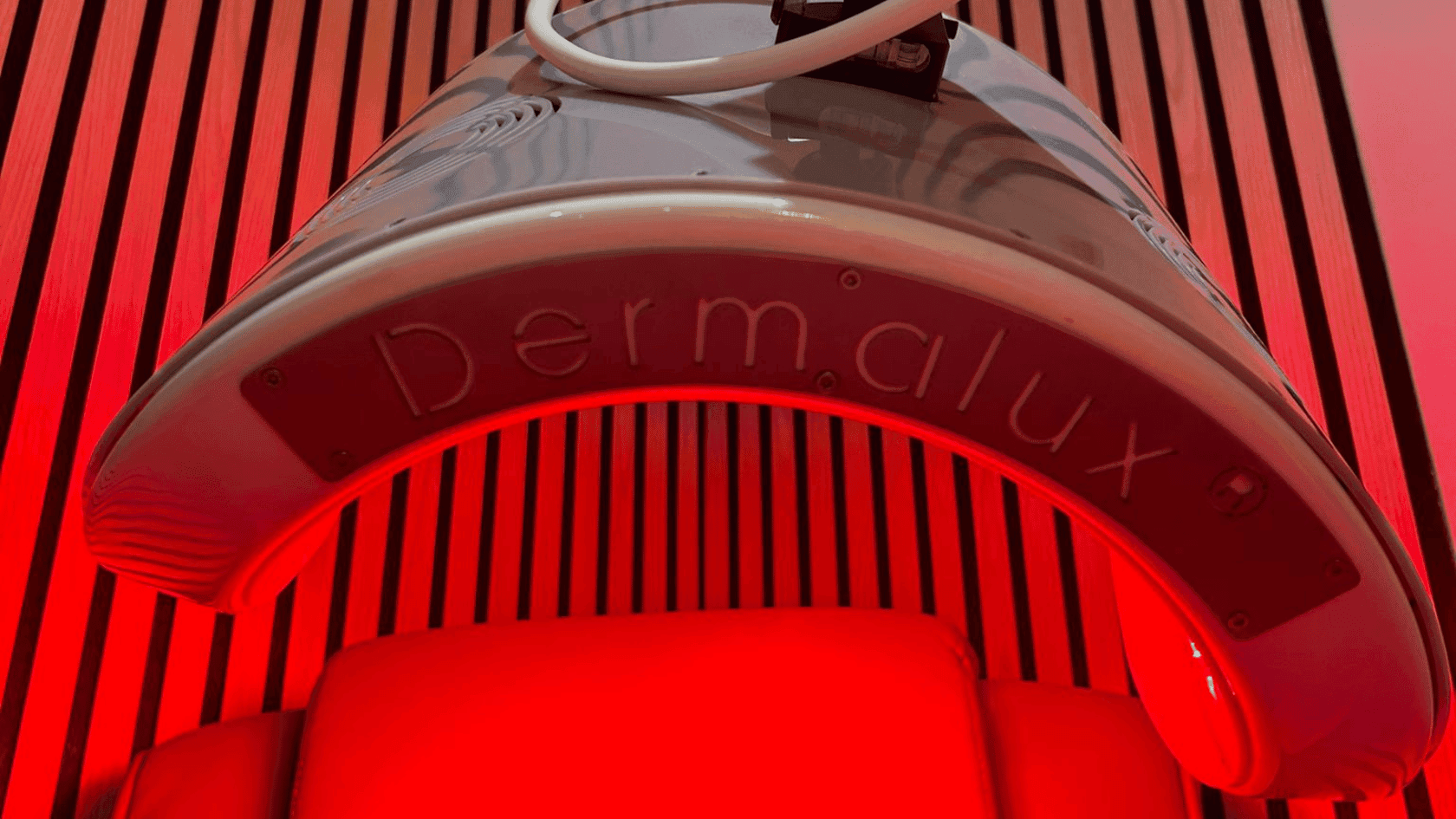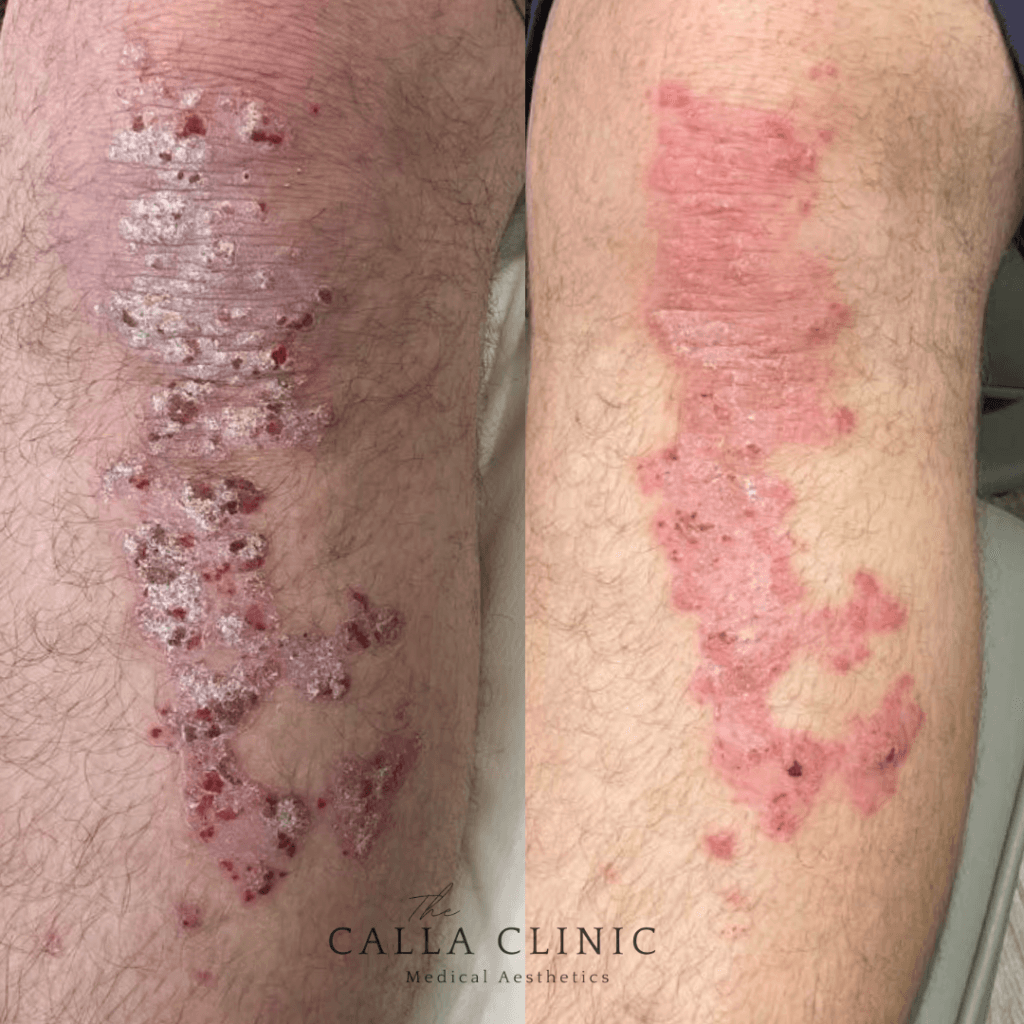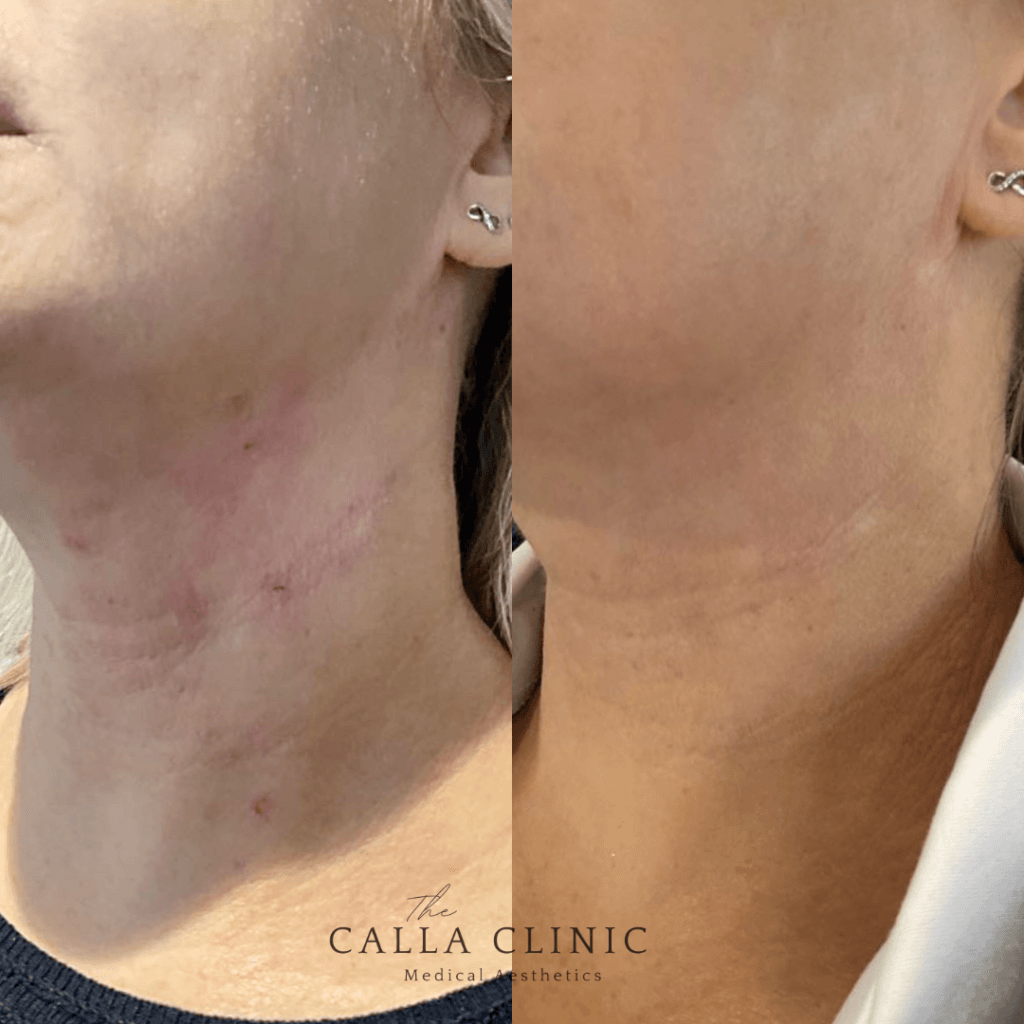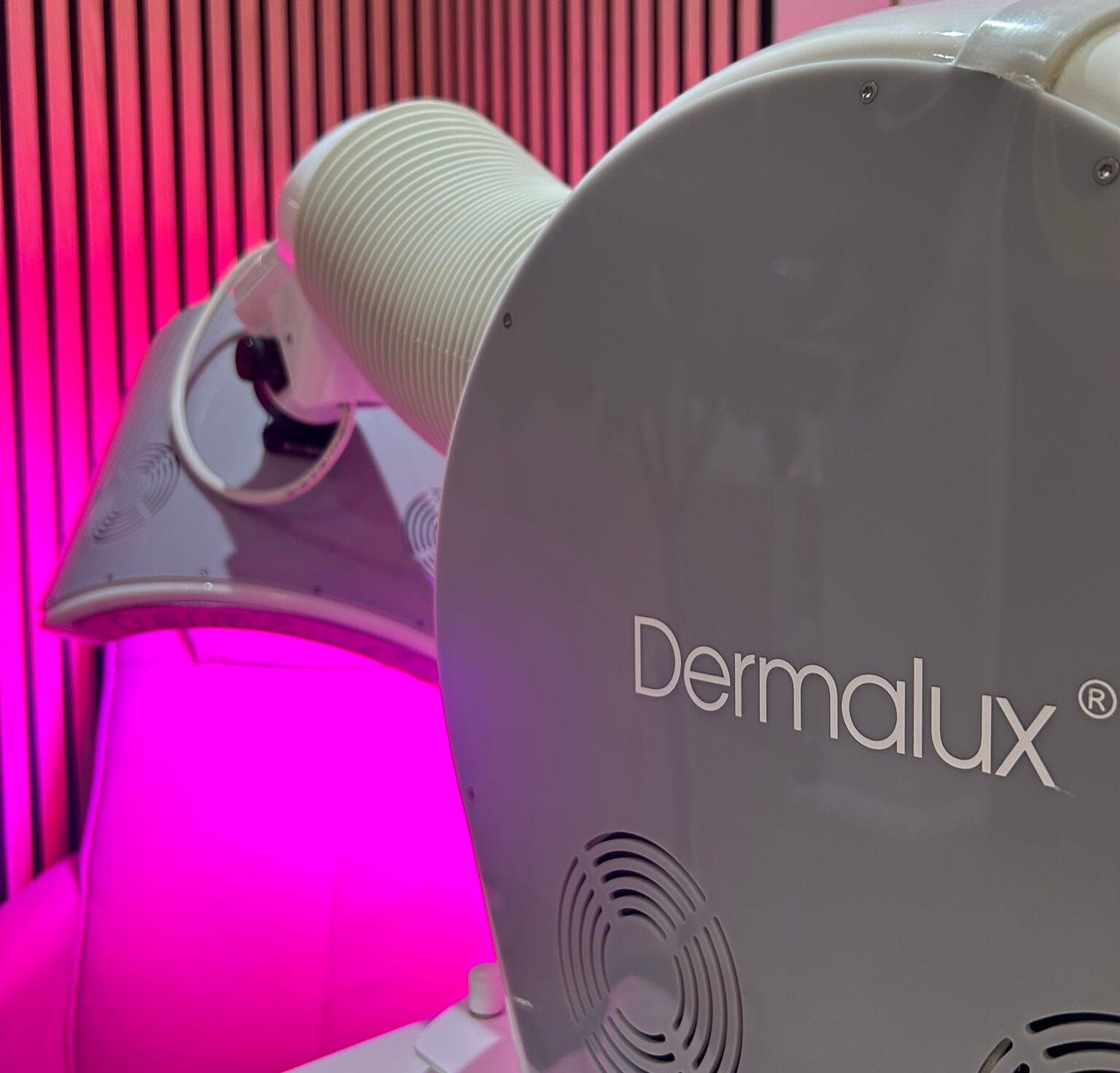Dermalux LED Therapy
Unleash the Power of Light with Dermalux LED Therapy at The Calla Clinic
Dermalux LED Therapy is where innovation meets relaxation. It’s a world-leading brand in phototherapy, and it’s a British company, too!
This cutting-edge technology harnesses the power of LED light to stimulate your skin’s natural healing and rejuvenation processes, offering a safe and effective solution for a wide range of skin concerns. The specific wavelengths of light used are absorbed by your skin cells & provide a ‘supercharge’ of energy. This boosts the activity of targeted skin cells such as your fibroblasts (collagen creating cells), making them work more effectively.
At The Calla Clinic, we’re skin experts, and we exhaustively test the market for skin treatments which are safe, simple, effective and fit into your everyday life without complication. Dermalux is one of those treatments which ticks all these boxes: the LED technology we use is medically certified, clinically proven and backed by science. This treatment can be used as a stand alone option, but is best when combined with our other treatments to accelerate results and healing.

At a glance
20 minutes
3-6 months
6 – 12
None
None


The Science Behind Dermalux LED Therapy
Dermalux LED Therapy uses only clinically evidenced wavelengths of light to penetrate deep into the skin, triggering a cascade of beneficial effects, including:
The three wavelengths of LED light used in Dermalux therapy—red, blue, and near-infrared—each offer specific benefits to improve the health and appearance of the skin. These wavelengths penetrate the skin at different depths, targeting various skin concerns. Here’s how they work:
Red Light (633 nm): Stimulates collagen production, reduces inflammation, and promotes healing.
Blue Light (415 nm): Targets acne-causing bacteria and reduces breakouts.
Near-Infrared Light (830 nm): Heals and repairs deep tissue, reduces inflammation, and improves circulation.
Other LED wavelength colours have no proven clinical benefit and that is the reason our device uses just these three wavelengths.
What conditions does Dermalux LED therapy treat?
Dermalux LED can form part of a wider treatment plan for the following concerns:
- Eczema/dermatitis
- Wound healing
- Psoriasis
- Rosacea
- Acne
- Pigmentation
- Photodamage
- Fine lines & wrinkles
- Seasonal Affective Disorder

FAQs
What does Dermalux LED Therapy feel like?
Dermalux LED Therapy is a completely pain-free treatment. During the treatment you can sit back and relax on a reclining chair, snuggled under a cosy blanket and listen to calming music. It feels like you are sunbathing on holiday but without the damaging UV! You may feel a slight tingling sensation on your skin, but this is usually very mild. It is your 20 minutes of complete YOU time to switch off, unwind and let your skin be supercharged.
How long does a Dermalux LED Therapy treatment take?
A Dermalux LED Therapy treatment lasts 20 minutes.
How many treatments will I need?
The number of treatments you need will depend on your individual skin concerns and the goals you’d like to achieve. We recommend a course of 6-12 sessions, but further treatments may be required. Ideally these should be done once or twice weekly. You can also have the Dermalux as an extra following another treatment and with many of our treatments this is already included in your price as we use this to assist healing post-procedure.
Your practitioner at The Calla Clinic will be very pleased to advise on the best course of treatment for you, and to provide an estimate of how many treatments you will need.
Is Dermalux LED Therapy safe?
Dermalux LED Therapy is an extremely safe and well-tolerated treatment. It is suitable for all skin types and there is no downtime associated with the treatment at all.
What conditions does Dermalux LED therapy treat?
Dermalux LED can form part of a wider treatment plan for the following concerns:
- Eczema/dermatitis
- Psoriasis
- Rosacea
- Acne
- Pigmentation
- Photodamage
- Fine lines & wrinkles
- Seasonal Affective Disorder
Let’s chat
Posted on
